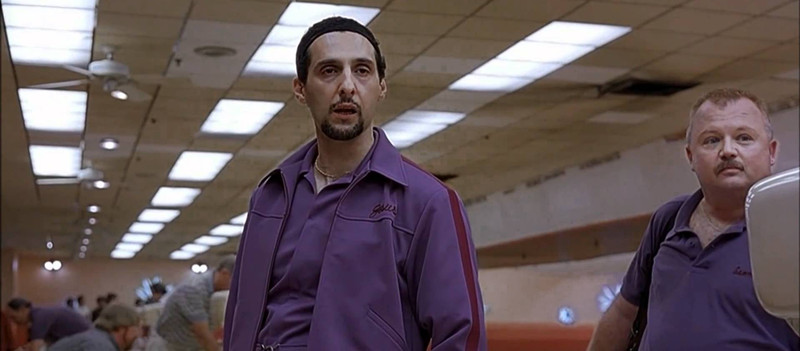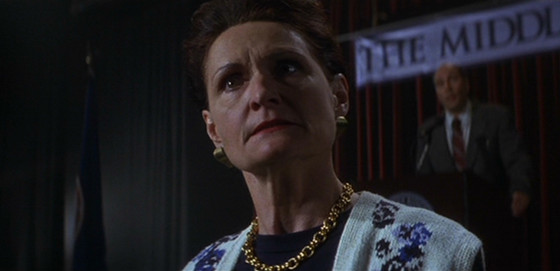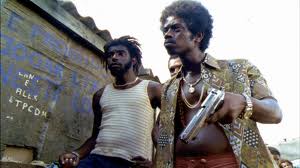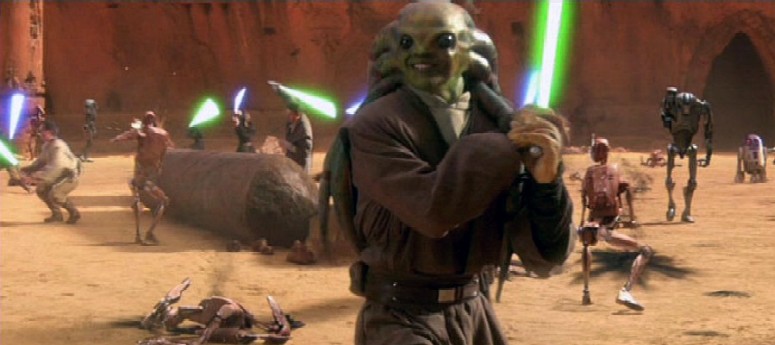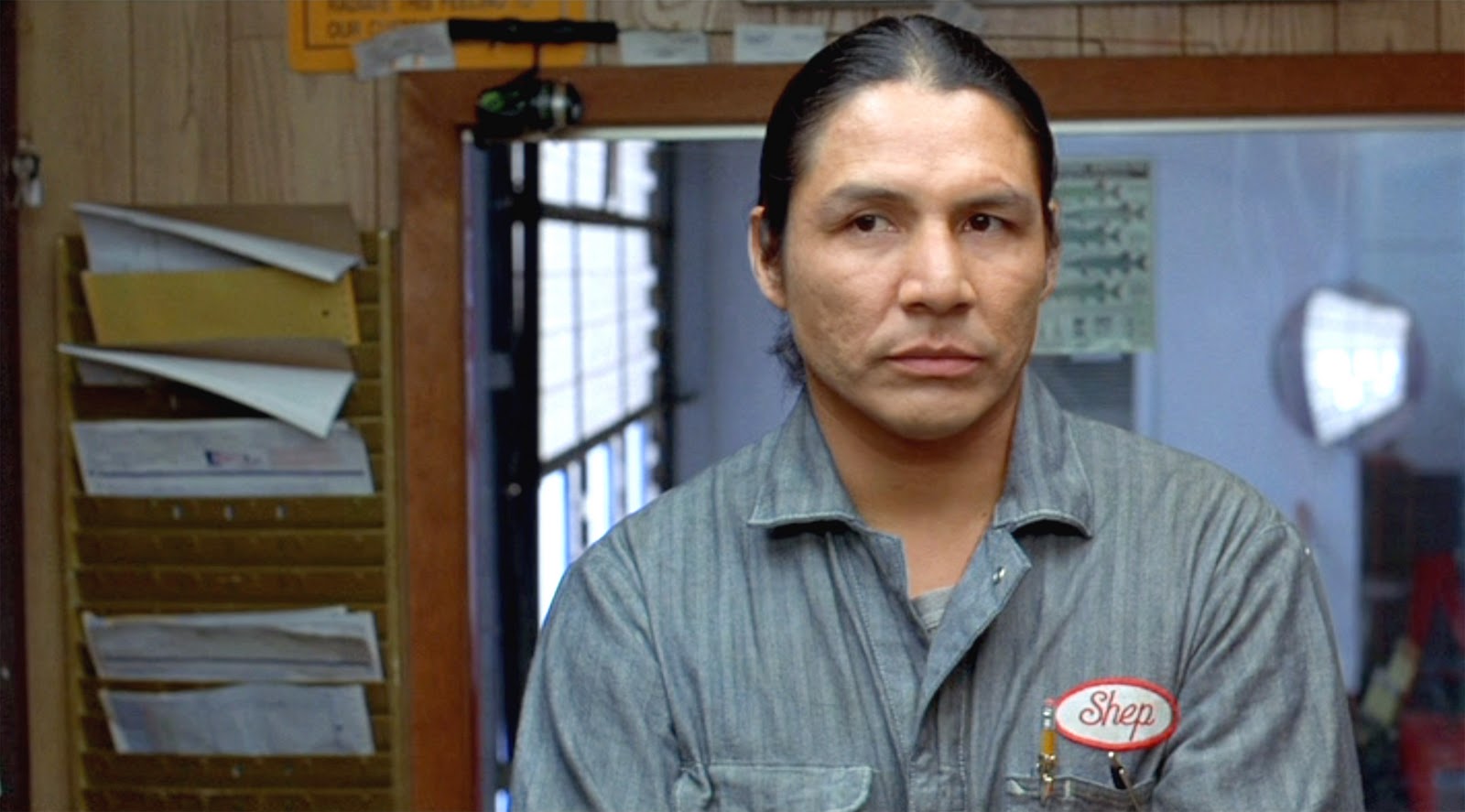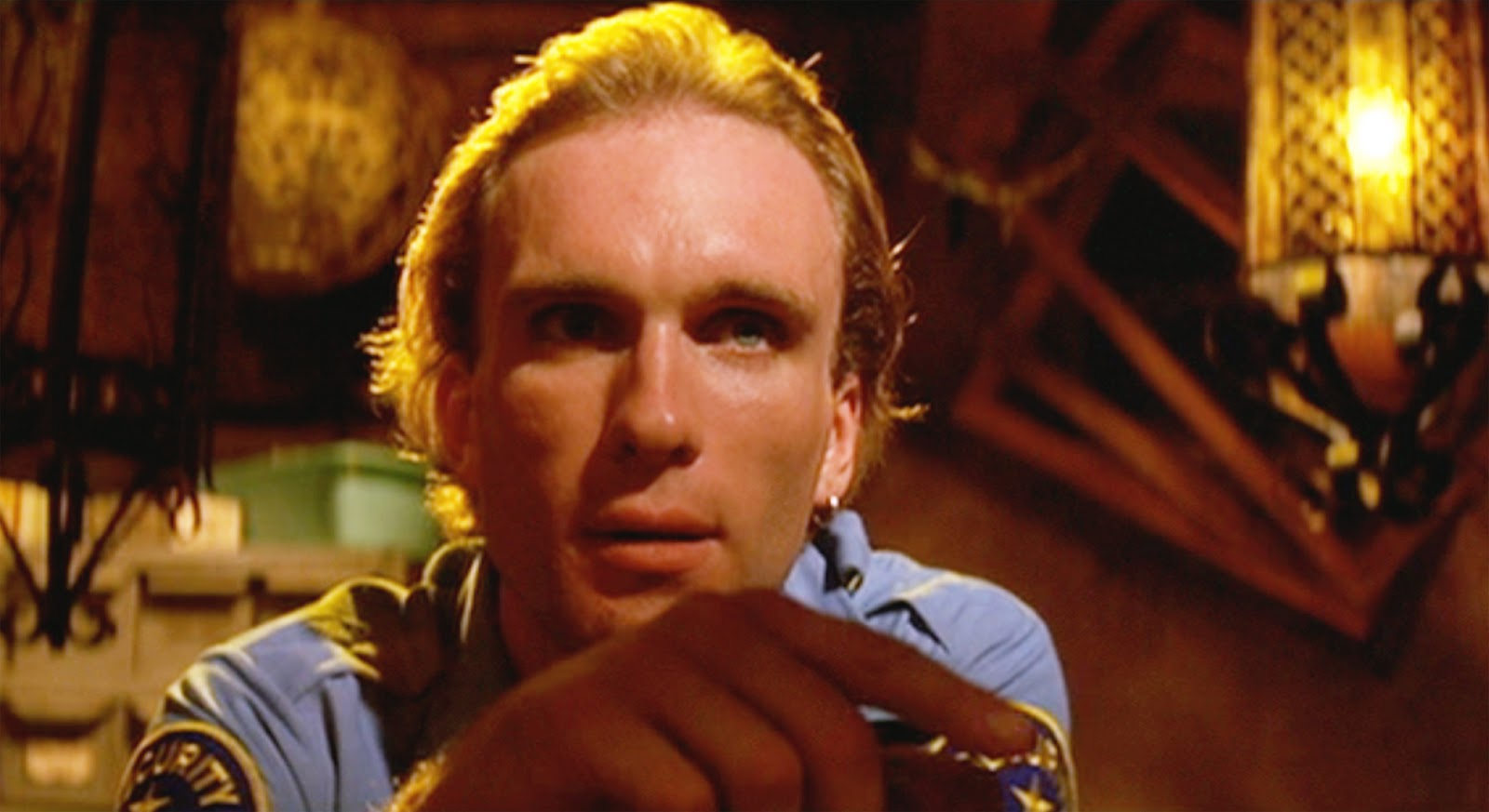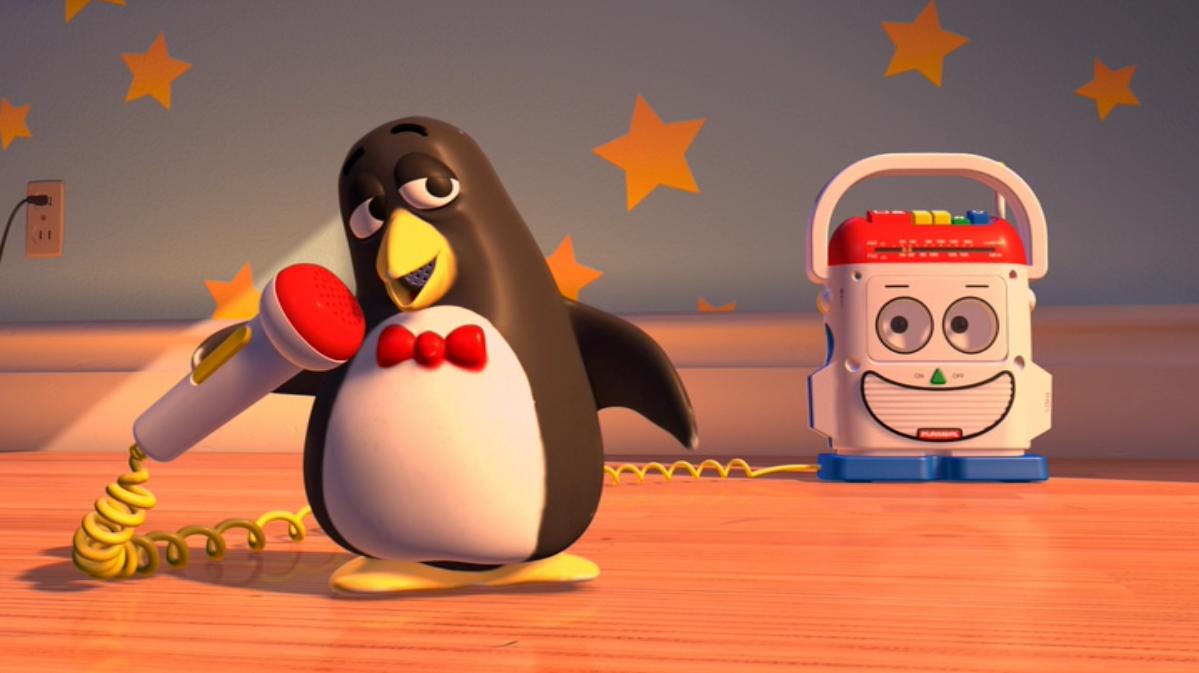Very rarely does a writer include a character in a film for a non-deliberate reason. Whether they symbolize some part of the theme or play a role in the plot of the film, every character that is presented contributes to the film. Sometimes even extras in the background who may not even be professional actors can influence the way a film is made.
This list is intended to talk more about those characters that the audience may recognize but wouldn’t normally think is very significant. Some of these characters are significant in the course of the plot, and others are seen only a few times in the film and yet can represent much more than what the size of their role would suggest.
20. Kitty Farmer from Donnie Darko
Portrayed throughout the course of the film as a very critical and rude woman, Kitty Farmer is an advocate of traditional teaching styles and doesn’t much support Donnie or his recent stint of philosophizing. When she brings in the motivational speaker (Patrick Swayze) to talk with the students, she supports his philosophy of love and fear. She attempts to teach the students that every action someone takes is either an action of Love or Fear; she sees the world in two shades.
It is quite evident that this philosophy clashes with that of Donnie, as well as Ms. Pomeroy (Drew Barrymore). When Ms. Pomeroy attempts to include the book “The Destructors,” a short story by Graham Greene that tells of a boy who destroys a house, Kitty adamantly attacks her teaching approaches at a PTA meeting and goes as far to say that this book is a piece of “pornography.” Kitty is a product of the society that she grew up in, and tries as hard as she can to reinforce the traditional values she knows into the minds of her peers and students.
Donnie undergoes a huge philosophical journey in the film, and although Kitty Farmer is not the primary antagonist, she can very easily be seen as a product of this society in which the film takes place. She sees the world in black and white, and helps symbolize the obstacles that are faced by Donnie being “different.”
19. Tuba from City of God
City of God is a tough movie to watch. It tells the story of boys growing up in the suburbs of Rio de Janeiro, and includes many heartless murders and gang violence between young children. Tuba is the wingman of L’il Ze, the leader of the gang. The film shows the growth of the main characters from when they were kids, but Tuba only plays a role in a small part of the film’s timeline. After a shootout, Tuba and L’il Ze are both wounded and walking away, as Tuba can’t stop talking about how cool he feels and how he and L’il Ze are like “brothers.”
Even after he’s been shot, Tuba still has a blind passion for the gang life, and seemingly is very nonchalant about it. He sees being shot as a rite of passage between him and his gang leader, and even it is mainly the adrenaline talking, he’s excited. Tuba represents more than just an annoying friend; he is representative of the absurdity of this entire lifestyle. It’s a horrific movie, and Tuba shows nothing but joy and happiness in this lifestyle of murder and gang violence. Tuba’s passion and joy for this gang lifestyle is representative of how lacking the members of the gang are in morals, by thinking very little of killing innocent people.
Tuba continues to talk and talk after the shootout, prompting L’il Ze to just shoot him out of sheer annoyance. Another example of the lack of order in this gang lifestyle, L’il Ze kills his best friend in the gang casually and doesn’t care at all about killing or the fact that he murdered a friend. So many people are murdered in the film that it seems the only way to have some sort of insurance against certain murder is to be involved in a gang, and yet even when you’re the gang’s biggest fan, like Tuba was, you still end up murdered. There’s no order, no morals, no room for a conscience in this gang lifestyle and the contradiction of Tuba’s passion for his gang life and then his murder just further supports the film’s message of how little reason and morality there is in this gang lifestyle.
18. Kit Fisto from Star Wars
One of the most famous Jedi in the Star Wars universe yet has very little attention in the film. Kit Fisto is a Jedi Master who can be seen in the Battle of Geonosis in Episode II as well as the attempted arrest of Chancellor Palpatine in Episode III. Although he has very little screen time, he is well known among Star Wars fans based on Expanded Universe literature and the cartoon series about the Clone Wars. He is one of the few Jedi that survives the initial assault on the stadium on Geonosis, and can be seen in several short clips as very proficient with a lightsaber.
His role in Episode III is a very pivotal moment in the transition of the Republic towards being under the leadership of the Dark Side. He accompanies Mace dWindu (Samuel L. Jackson) to Chancellor Palpatine’s office to arrest him and a fight quickly ensues. The two other Jedi that accompany them are killed quickly but Mace Windu and Kit Fisto are the most able fighters and are able to compete with Palpatine for a little while.
Unfortunately, Master Fisto is dispatched soon after and it is quite evident that Palpatine is more than just an old senator. The audience does not get to see enough of Fisto to truly see how strong he is and he is more than just a guy with an octopus on his head. A very minor character in the films, Master Fisto is representative of the physical skills of Jedi Masters, and shows that there are cooler Jedi on the Jedi Council than just the main characters.
17. Shep Proudfoot from Fargo
The Coen Brothers are famous for the many characters they’ve created over the years, and are perfect examples of directors/writers who intend every character they include in the story (and this isn’t the last of their characters we’ll see on this list). Shep Proudfoot, the Native American car mechanic who works for Jerry Lundegaard (William H. Macy), is an ex-convict who puts Jerry in touch with two criminals.
Shep doesn’t seem to care much for Jerry or the criminals he puts him in touch with, but seems to care only for himself. When the cop investigating the kidnapping and several murders comes to ask him and Jerry questions, his discomfort and irritancy is very evident by his one-word responses to Marge Gunderson’s questions. Upon realizing the fact that he has been connected to the two murderers, Shep becomes very angry and finds Steve Buscemi’s character to beat him up.
Shep is one of those characters that the audience doesn’t see much, but can appreciate him for the time that he is on screen. He’s really just a guy who is trying to get by, and doesn’t participate much in the film except for putting the white collar car dealer that is Jerry Lundegaard in touch with two criminals. Based on his dialogue and participation in the film events, it is clear that that is the way Shep likes it. He isn’t very concerned with other or with typical criminal endeavors, he’s more just concerned about his own well-being and distance from getting put in jail.
One symbolic claim that could be made about Shep is that he’s representative of the displacement of Native American culture in America by the White Man. The Native Americans were persecuted and pushed west in the 1800s America, and now his way of life is being threatened by his minor involvement in the affairs of these men in the film. Shep’s significance in the film is minimal, but he is a fan favorite just based on how little he cares for responding to police questioning, and for how he proceeds to beat up Steve Buscemi’s annoying character.
16. Zed from Pulp Fiction
One of the creepiest characters in the classic film, Zed is molesting creep that somehow, brings out the best of Butch (Bruce Willis) and Marcellus (Ving Rhames). The plot concerning Butch and Marcellus Wallace centers around Marcellus’ desire to punish Butch for not throwing a fight that he was paid to lose. The coincidental collision they have inspires a chase and eventual fight in a pawn shop, which ends up with them being knocked out by the shop owner and placed in a basement to receive whatever creepy punishment the shop owner and his friend Zed can come up with.
Zed proceeds to rape and physically beat Marcellus, with the intention of doing the same to Butch. These actions result in Butch escaping his imprisonment, killing the shop owner with a katana, and freeing Marcellus. This escape venture contains in it a pivotal moment in the story, where Butch decides to go back and help his former enemy after realizing that no one should be subjected to the kind of cruelty and molestation that Zed was taking out on Marcellus. Zed’s actions, although terrible and disgusting, inspire Butch and Marcellus to make amends after they’ve both been through this terrible ordeal.
Any post about Pulp Fiction would not be complete without a quote, and Marcellus outlines for Zed the exact punishment he will enact on him by saying: “Let me tell you what now. I’ma call a coupla hard, pipe-hittin’ n******s, who’ll go to work on the homes here with a pair of pliers and a blow torch. You hear me talkin’, hillbilly boy? I ain’t through with you by a damn sight. I’ma get medieval on your ass.” Zed’s greatness as a character can be characterized by the fact that he is able to bring two enemies together and then inspire a speech like that from Marcellus.
15. Wheezy from Toy Story 2
The Toy Story series is a very goodhearted and emotional tale about children growing up, and their toys having to adapt to their owners’ growth. Wheezy is a bow-tie wearing penguin that Andy had, and when his squeaker broke he was placed on top of the shelf and forgotten behind a stack of books. He is only discovered when an injured Woody is also placed on top of the shelf with the belief that Andy’s mom will also fix him.
Wheezy is very accepting of his situation when he believes he will be sold in the yard sale, and his heartbreakingly raspy voice is a testament to how difficult it is for a toy to face being forgotten. The dust atop the shelf has become a part of his home, far away from Andy and the rest of the toys. Wheezy is a very strong character to set up the theme of this second entry in the Toy Story series: the act of being forgotten.
Eventually we meet Jessie, who was also left behind, and Woody also has to face the fact that he believes Andy is growing too old for him. Wheezy can be seen as an ominous foreshadowing of what will happen to toys as the children grow up: they will be forgotten and not missed very much.
By the end of the film, Wheezy’s squeaker is fortunately fixed and all the toys are able to live happily knowing that they are still cared for, both by Andy and the other toys.
